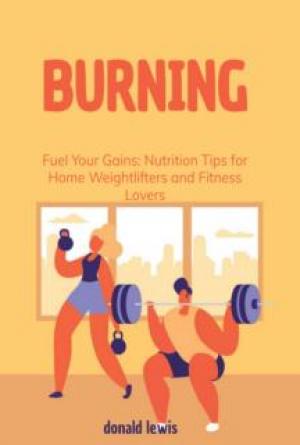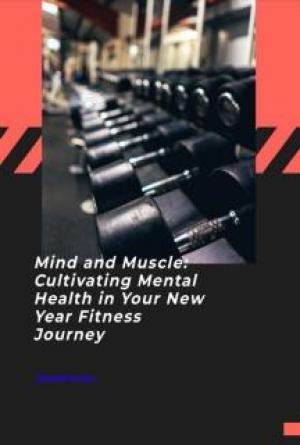Boost Your Metabolism
Table of Contents
Introduction ........................................................5
Towards Understanding Metabolism ..........................6
Low Fat Labels ...................................................7
What’s Inside… ...................................................9
Part 1: What is Metabolism? ................................... 10
The Medical Mumbo Jumbo .................................. 10
Anabolism and Catabolism ................................... 13
Metabolism and Weight Loss ................................. 14
Calories ......................................................... 15
A Final Word About Fat ....................................... 18
Recap ............................................................ 19
Part 2: Tips, Techniques, and Strategies for Boosting your
Metabolism ....................................................... 21
Exercise ......................................................... 24
Build Muscle .................................................. 25
Interval Training ............................................. 27
Variety ........................................................ 30
Lifestyle......................................................... 35
Get on the Wagon ........................................... 36
Zzzzzzzz…..Zzzzzzzzz....................................... 37
Relax .......................................................... 39
There’s Something GOOD About This Time of the
Month!?........................................................ 41
Diet .............................................................. 42
Don’t Hate Calories ......................................... 42
Eat More? ..................................................... 46
Eat Early ...................................................... 47
Befriend Protein and Good Carbs ......................... 49
Conclusion ........................................................ 53
A Final Word: Common Metabolism-Boosting Myths........ 55
Myth #1: Diet Pills ............................................. 55
Myth #2: Drop Caloric Intake ................................ 57
Myth #3: Low Intensity Workouts ........................... 58
Myth #4: Too Much Focus..................................... 60
Introduction
Metabolism. There isn’t perhaps a more frequently used word in the weight loss (and weight gain) vocabulary than this.
Indeed, it’s not uncommon to overhear people talking about their struggles – or triumphs – over the holiday bulge or love handles in terms of whether their metabolism is working, or not.
Doctors, too, often refer to metabolism when they try and explain why starvation and water-loss diets aren’t scientifically of medically responsible; since, alas, they do not influence or take into account metabolism (there’s that word again!).
So, for all of the usage that this rather daunting and biologicallycharged word enjoys in our world, you’d comfortably assume that people understand it, right?
Or, at least, they have some fundamental information when it comes to how to speed
up their metabolism, right?
Wrong!
Towards Understanding Metabolism
Regrettably, many people simply don’t understand the concept of metabolism and metabolic change. This, equally as regrettably, is hardly their fault.
There is so much information floating around out there, much of it over the ‘net or through a “friend of a friend who has a personal trainer”, that there’s bound to be some confusion and conflicting messages.
Furthermore, many people (quite understandably) mistake their own weight gain and loss episodes as a matter of metabolic change. Sometimes this is true, and sometimes it isn’t.
For example, as we will discuss in this book, there are scientific ways to increase the rate of metabolic change, and thus enable the body to burn more calories.
Eating certain foods more frequently is one way to do this (again, we look closer at these in this book). Yet another way to visibly lose weight – at least on a perceived, temporary level – is to sit in a steam room for a few hours.
Whereas the former method (eating the right foods) is a real, proven weight loss method through increased metabolic change, the latter method (the steam room) is just temporary because the lost weight is merely water, and will return as swiftly as it “melted away”.
The point to remember here is that some people mistake their own weight loss attempts as being related to metabolic change; and, as you can see with the steam room example, that isn’t always the case.
Low Fat Labels
Another big reason that people don’t have clear, consistent information on this topic is because, unfortunately, there are a lot of food and supplement companies on the market who don’t want you to know fact from fiction.
They want you to believe that constantly buying “low fat” foods is going to somehow speed up your metabolism.
While, yes, some low fat foods can play a role in an overall eating program that is designed to speed up metabolism, merely eating foods that come from packaging that screams “LOW FAT!” won’t do anything.
In fact, believe it or not, but many people actually gain weight when they eat too many “low fat” products. Many of these products are laden with calories from carbohydrates or proteins (which are still calories and still must be burned off or they turn into body fat).
As you can see, and probably feel from years of trying to unravel this whole metabolic mystery, this is a confusing, stressful, and indeed, potentially depressing situation.
Each year, tens of millions of people attempt to retake control over their health and the shape of their body; and each year, tens of millions of people feel that they’ve “failed” because, try as they might, they just can’t speed up their metabolism.
This book is the antidote to that way of thinking and feeling because the perceived failure is not a failure in any of these hard working dieters and exercisers (of which you may be one).
The failure is with the medical and nutritional sector as a whole, which has simply not provided people with the information that they need to know in order to speed up their metabolism.
And given the size of the nutritional field and the fact that so much of it is influenced by money-making enterprises (not all of the field, of course, but enough of it to make a difference), there’s really no sense in playing a “wait and see” game for when clear, consistent, and helpful information starts to flow out to people like us.
What’s Inside…
And that’s why this book exists. It’s been created for the millions of everyday people like us who simply want to know how to speed up metabolism, and how to lose weight the right, healthy, and responsible way. We want to know:
•
What the heck a metabolism is, and what role it really plays on weight loss and gain
• The proven, scientific ways to speed up metabolism – not myths and fitness club “speculation”; but the real deal.
• Specific diet and food items and promote a faster metabolism, so that once unwanted weight has been lost, it can be kept off through a responsible eating plan.
And in the pages ahead, that’s precisely what we cover!
Part 1: What is Metabolism?
Some people think that the metabolism is a kind of organ, or a body part, that influences digestion.
Actually, the metabolism isn’t any particular body part.
It’s the
process by which the body converts food into energy.
Hence, you’ve likely heard of the phrase metabolic process used synonymously with the term metabolism, because they both mean the same thing.
The Medical Mumbo Jumbo
This isn’t a complicated medical text (which should be great news to most of you!), and so we don’t need to spend an unnecessary amount of time and space focusing on the layered complexity of the human body and its extraordinary intelligence.
Yet without drilling deeply into medical details -- which are not relevant for our general understanding purposes -- it’s helpful to briefly look at the biological mechanisms behind metabolism. Metabolism, as mentioned above, is the process of transforming food (e.g. nutrients) into fuel (e.g. energy). The body uses this energy to conduct a vast array of essential functions.
In fact, your ability to read this page – literally – is driven by your metabolism.
If you had no metabolism – that is, if you had no metabolic process that was converting food into energy – then you wouldn’t be able to move.
In fact, long before you realized that you couldn’t move a finger or lift your foot, your internal processes would have stopped; because the basic building blocks of life – circulating blood, transforming oxygen into carbon dioxide, expelling potentially lethal wastes through the kidneys and so on – all of these depend on metabolism.
Keep this in mind the next time you hear someone say that they have a
slow metabolism.
While they may struggle with unwanted weight gain due to metabolic factors, they certainly have a
functioning metabolism.
If they didn’t, they wouldn’t even be able to speak (because that, too, requires energy that comes from, you guessed it: metabolism!).
It’s also interesting to note that, while we conveniently refer to the metabolic process as if it were a single function, it’s really a catchall term for countless functions that are taking place inside the body. Every second of every minute of every day of your life – even, of course, when you sleep – numerous chemical conversions are taking place through metabolism, or metabolic functioning.
In a certain light, the metabolism has been referred to as a harmonizing process that manages to achieve two critical bodily functions that, in a sense, seem to be at odds with each other.
Anabolism and Catabolism
The first function is creating tissue and cells. Each moment, our bodies are creating more cells to replace dead or dysfunctional cells.
For example, if you cut your finger, your body (if it’s functioning properly) will begin – without even wasting a moment or asking your permission –the process of creating skin cells to clot the blood and start the healing process. This creation process is indeed a metabolic response, and is called anabolism.
On the other hand, there is the exact opposite activity taking place in other parts of the body. Instead of building cells and tissue through metabolism, the body is breaking down energy so that the body can do what it’s supposed to do.
For example, as you aerobically exercise, your body temperature rises as your heart beat increases and remains with a certain range.
As this happens, your body requires more oxygen; and as such, your breathing increases as you intake more H2O. All of this, as you can imagine, requires additional energy.
After all, if your body couldn’t adjust to this enhanced requirement for oxygen (both taking it in and getting rid of it in the form of carbon dioxide), you would collapse!
Presuming, of course, that you aren’t overdoing it, your body will instead begin converting food (e.g. calories) into energy. And this process, as you know, is a metabolic process, and is called catabolism.
So as you can see, the metabolism is a constant process that takes care of two seemingly opposite function: anabolism that uses energy to create cells, and catabolism that breaks down cells to create energy.
Indeed, it’s in this way that the metabolism earns its reputation as a harmonizer. It brings together these apparently conflicting functions, and does so in an optimal way that enables the body to create cells as needed, and break them down, again as needed.
Metabolism and Weight Loss
By now, you already have a sense of how metabolism relates to weight loss (catabolic metabolism, or breaking cells down and transforming them into energy).
To understand this process even more clearly, we can introduce a very important player in the weight loss game: the
calorie.
Calories
Calories are simply units of measure. They aren’t actually things in and of themselves; they are labels for other things, just like how an inch really isn’t anything, but it measures the distance between two points.
So what do calories measure?
Easy: they measure
energy.
Yup, the evil calorie – the bane of the dieter’s existence – is really just a 3-syllable label for energy.
And it’s important to highlight this, because the body itself, despite its vast intelligence (much of which medical science cannot yet understand, only appreciate in awe) does not really do a very intelligent job of distinguishing good energy from bad.
Actually, to be blunt, the body doesn’t care about where the energy comes from. Let’s explore this a little more, because it’s very important to the overall understanding of how to boost your metabolism, particularly when we look at food choices. In our choice-laden grocery stores, with dozens of varieties of foods – hundreds, perhaps – there seems to be a fairly clear awareness of what’s good food, and what’s bad or junk food.
For example, we don’t need a book to remind us that, all else being equal, a plum is a good food, whereas a tub of thick and creamy double-fudge ice cream is a bad food.
Not bad tasting, of course; but, really, you won’t find many fit people eating a vat of ice cream a day, for obvious reasons. So what does this have to do with calories and energy?
It’s this: while you and I can evaluate our food choices and say that something (like a plum) is a healthy source of energy, and something else (like a tub of ice cream) is an unhealthy source of energy, the body doesn’t evaluate. Really.
It sounds strange and amazing, but the body really doesn’t care. To the body, energy is energy. It takes whatever it gets, and doesn’t really know that some foods are healthier than others. It’s kind of like a garbage disposal: it takes what you put down it, whether it should go down or not.
So let’s apply this to the body, and to weight gain. When the body receives a calorie – which, as we know, is merely a label for energy – it must do something with that energy.
In other words, putting all other nutrients and minerals aside, if a plum delivers 100 calories to the body, it has to accept those 100 calories. The same goes for 500 calories from a (small) tub of ice cream: those 500 calories have to be dealt with.
Now, the body does two things to that energy: it either metabolizes it via anabolism, or it metabolizes it via catabolism. That is, it will either convert the energy (calories) into cells/tissue, or it will use that energy (calories) to break down cells.
Now the link between calories/energy, metabolism, and weight loss becomes rather clear and direct.
When there is an excess of energy, and the body can’t use this energy to deal with any needs at the time, it will be forced to create cells with that extra energy. It has to.
It doesn’t necessarily want to, but after figuring out that the energy can’t be used to do anything (such as help you exercise or digest some food), it has to turn it into cells through anabolism.
And those extra cells? Yup, you guessed it: added weight!
In a nutshell (and nuts have lots of calories by the way, so watch out and eat them in small portions…), the whole
calorie/metabolism/weight gain thing is really just about excess energy.
When there are too many calories in the body – that is, when there’s too much energy from food – then the body transforms those calories into stuff.
And that stuff, most of the time, is fat. Sometimes, of course, those extra calories are transformed into muscle; and this is usually a good thing for those watching their weight or trying to maintain an optimal body fat ratio.
In fact, because muscles require calories to maintain, people with strong muscle tone burn calories without actually doing anything; their metabolism burns it for them.
This is the primary reason why exercising and building lean muscle is part of an overall program to boost your metabolism; because the more lean muscle you have, the more places excess calories can go before they’re turned into fat.
A Final Word About Fat
There’s a nasty rumor floating around out there that fat cells are permanent. And the nastiest thing about this rumor is that it’s true.
Yes, most experts conceded that fat cells – once created – are there for life. Yet this doesn’t spell doom and gloom to those of us who could stand to drop a few pounds. Because even though experts believe that fat cells are permanent, they also agree that fat cells can be shrunk. So even if the absolute number of fat cells in your body remains the same, their size – and hence their appearance and percentage of your overall weight – can be reduced.
Recap
So while we haven’t gone into any medical detail – because we don’t need to or want to – we have covered some key basics about metabolism. In fact, you probably know as much about metabolism now as many so-called experts.
The bottom line is simply that metabolism represents a process – countless processes, in fact – that convert food into energy. When this process creates cells, it’s called anabolism. When this process breaks cells down, it’s called catabolism.
For people trying to lose weight, it’s important to experience catabolism. That is, it’s important convert food into energy that is used to break cells down.
Catabolism is also important because it prevents excess energy (calories) from being stored by the body.
Remember: when the body has too many calories – regardless of what food source those calories came from – it can only do two things. It can desperately try and see if you have any energy needs (like maybe you’re running a marathon at the time).
Or, more often, it will have to store those calories. It has no choice. And unless you have lean muscle that is gobbling up those excess calories, you’ll be adding fat.
The remainder of this book, however, is going to point you in the opposite direction. You’ll learn various techniques, tips, and strategies to boost your metabolism.
And then, in the latter part of this book, you’ll be introduced to some metabolism-boosting foods that you’ll surely want to add to your regular eating regimen.
Part 2: Tips, Techniques, and Strategies for Boosting Your Metabolism
If you’re reading this book, chances are that you’ve tried – at least
once in your life – to boost your metabolism.
Perhaps (like most of us) you weren’t quite certain what a metabolism was, and perhaps (again, like most of us) you probably didn’t quite know all that you needed to know in order to accomplish your goals.
Maybe you started a rigorous exercise program of jogging and muscle toning.
Or maybe you started eating several small portions a day, rather than three large traditional
meal-sized portions.
Or maybe you started taking all kinds of supplements that promised to boost your metabolism.
The thing is, is that
all of these methods can indeed work.
Really: exercise, eating strategically, and ensuring that your body has catabolism-friendly supplements are but three of many generally good ideas.
So what’s the problem? The problem is that many of us have no real scientific understanding of what, how, or why these methods boost metabolism.
Some of us, in fact, don’t really even know if they work; we just think that they do.
For example, a person may start a vigorous exercise program that includes significant aerobic cardiovascular movement, such as jogging or cycling.
And indeed, after a week, that person may notice a drop in weight.
Yet is this due to a boosted metabolism? Maybe; maybe not. Could it be due to water loss through perspiration that hasn’t been adequately replenished? Maybe or maybe not.
The point here is that many people – at risk to their health and wellness – don’t quite understand the tips, strategies, and techniques of boosting their metabolism. And that’s what we’re going to rectify in this chapter.
In this book, you won’t come across any casual information that a friend of a friend heard on TV. Nor will you be subjected to offthe-cuff information of how to boost your metabolism. Rather, we’re going to look at the popular, easy, fun (yes, believe it or not), and successful ways to boost your metabolism.
The popular and widely respected Internet publication i-Villagei highlights 11 key ways to speed up metabolism. To most easily introduce and discuss them here, we’ve taken these 11 key ideas and broken them down into 3 broad categories:
1. Exercise
2. Lifestyle
3. Diet
As you go through each of the 11 key points, you’ll certainly note that there is some overlap between them. For example, it’s hard to imagine that introducing exercise into your life isn’t, in many ways, a lifestyle choice.
Similarly, integrating all kinds of metabolism-boosting foods into your diet is surely going to influence how you spend your time (probably less time in fast food line-ups, for one!).
So with this being said, please don’t get bogged down in the categories; they are merely provided here to help organize these points, and to help you easily refer to them in the future. The important thing for you to do is understand each of the 14 points, and evaluate how you can responsibly integrate them into your life.
Exercise
It’s going to be
old news for you to be reminded that exercising is a bit part of boosting your metabolism and burning up calories.
Unless you’re born with one of those unusually active metabolisms which allows you to, almost freakishly, eat thousands of calories a day without weight-gain consequences, you’re like the vast majority of us who need to give your metabolisms a bit of a kick through exercising.
Now, you might think that cardiovascular (aerobic) exercise is an important part of boosting your metabolism; and you’d be right!
Provided that, of course, your qualified doctor confirms that you’re able to start a program of cardiovascular exercise, this is indeed the place to start. Increasing heart rate, blood circulation, body temperature, and oxygen intake/carbon dioxide exchange all send messages to the system to initiative catabolism (breaking down cells and using them for energy).
Yet if cardiovascular exercising is the place to start, does that mean that it’s the place to end?
No!
Many people, who aren’t as educated as you’ll be when you’ve finished this book, responsibly start a dedicated program of cardiovascular health, but they don’t go any further. Not because they’re lazy; but because, frankly, they don’t know that there is significantly more that they can do in their home gym, or at the fitness club, that will boost their metabolism even more potently.
We focus upon these added activities now, below.
Build Muscle
Many people – particularly some women – are very leery about undertaking any exercise regimen that can lead to muscle building.
The old perception was that muscle building leads to muscle bulking, and before long, gorging forearm veins and other unwanted results. This is, frankly, not the case.
Provided that women aren’t supporting their workouts with specific muscle-building supplements, there is no need to be concerned; because building lean muscle won’t make them bulk up.
Still, however, the question remains: why would women (and, of course, men) who want to boost their metabolism focus on muscle building? Isn’t cardiovascular exercising the only thing that matters?
Again, the answer is: No! In addition to a healthy and responsible cardiovascular program, muscle building is an exceptionally powerful way to boost metabolism.
How? Because a pound of muscle burns more calories than a pound of fat.
And what does this mean? It means (and get ready to stare in awe) that if you have more muscle on your body – anywhere on your body – you will simply burn more calories as a result.
You don’t even have to do anything. You’ll simply burn more calories, because muscle simply requires more of an energy investment.
Of course, as you can infer, if you build muscle and then leave it alone, over time, the muscle fibers will weaken and you’ll lose that wonderful calorie-burning factory. But that’s no problem, because all you need to do is build and maintain hea







